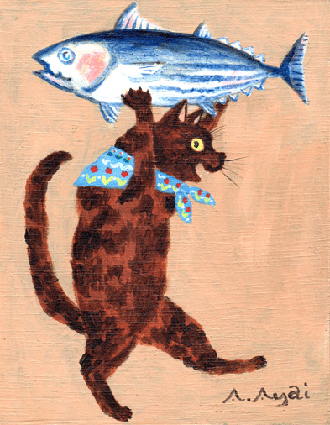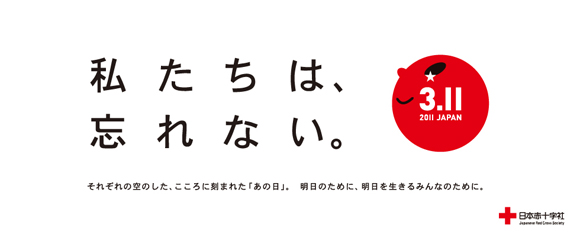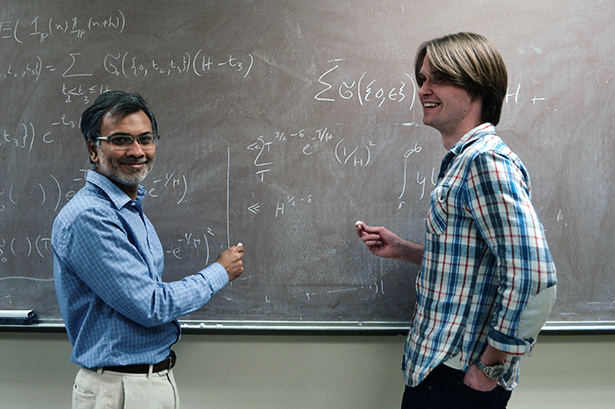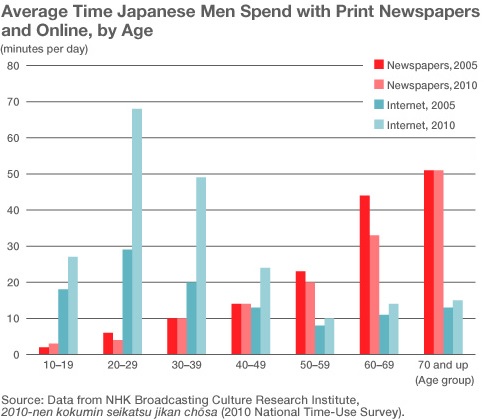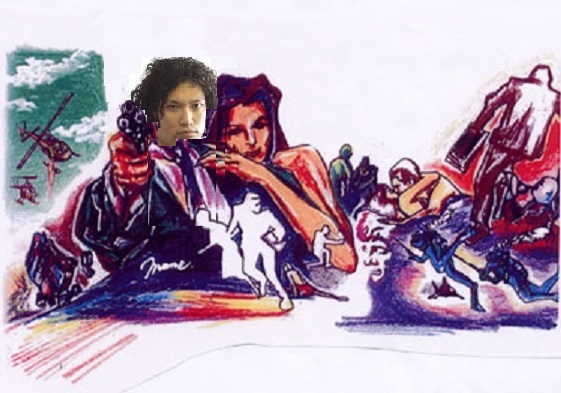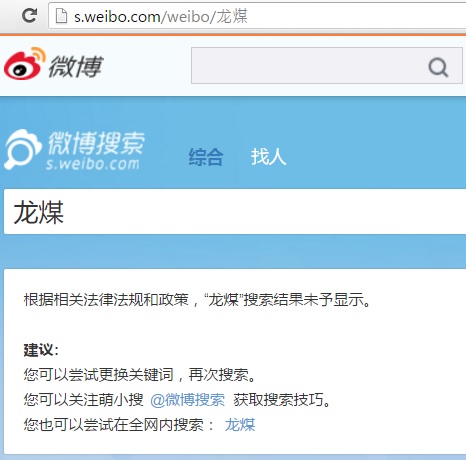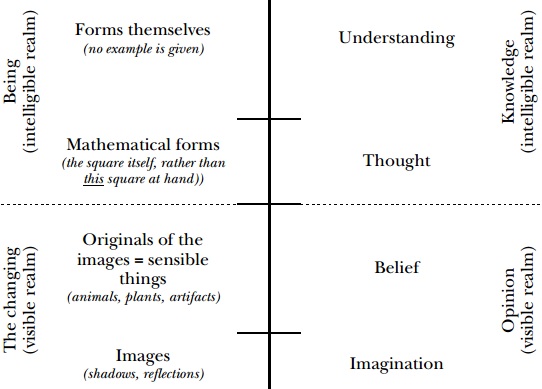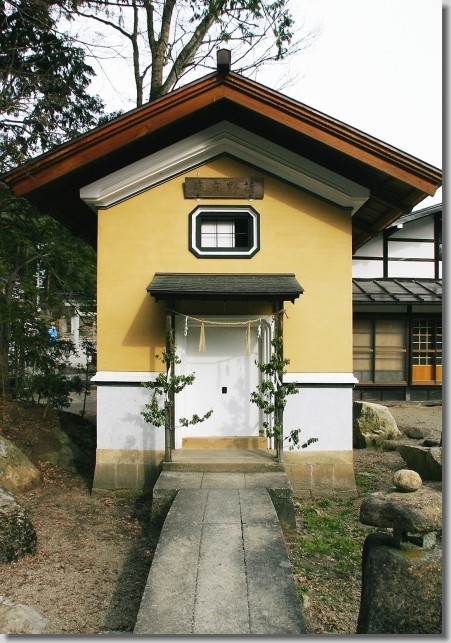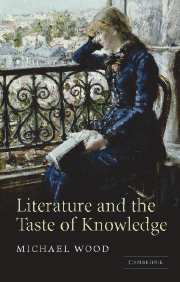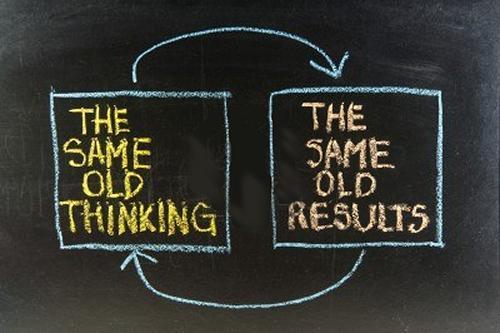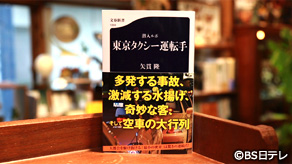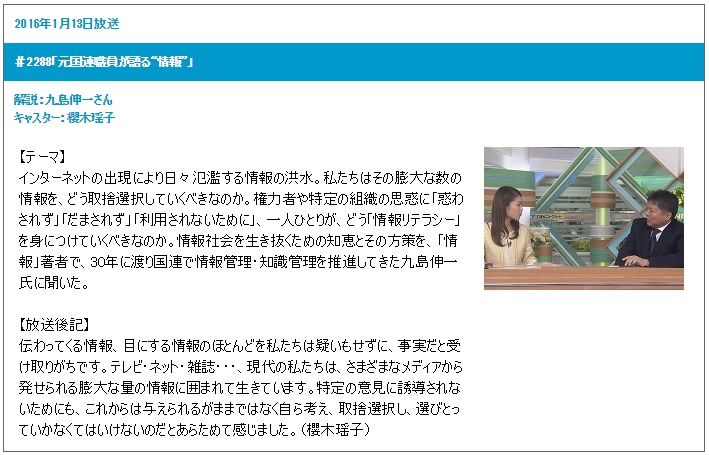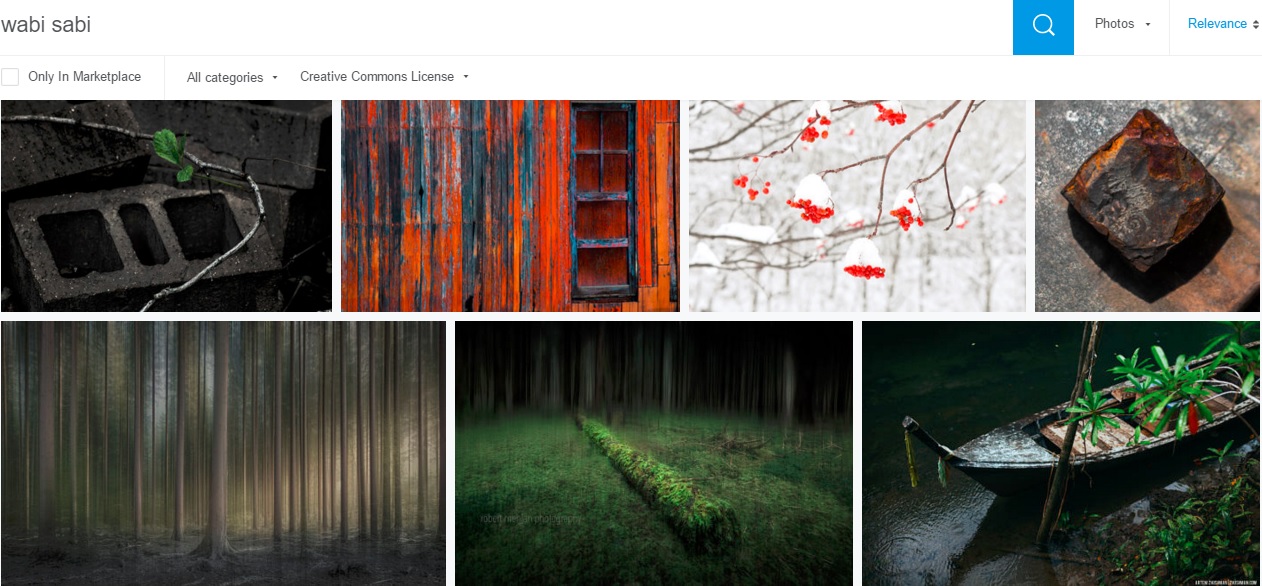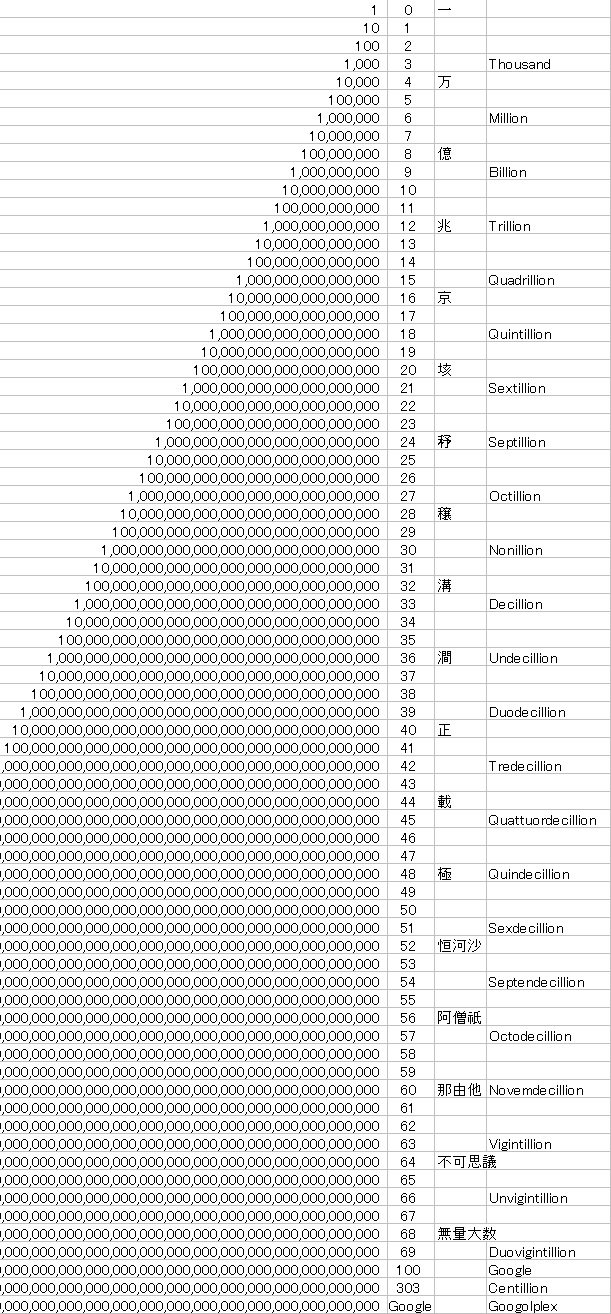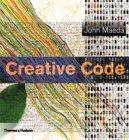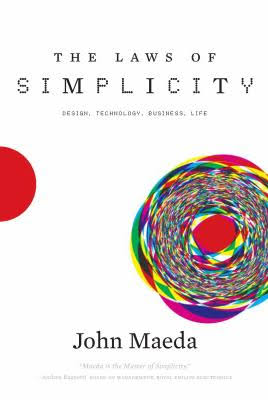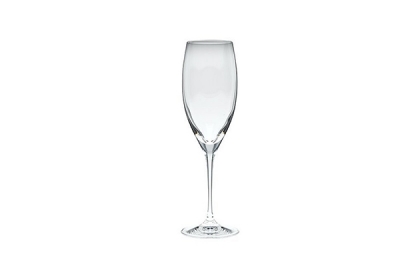I believe that there’s a difference between knowing something and understanding it. You know how you’ll try to communicate something very important to you to another person and sometimes they’ll wave you off with an impatient, “I know, I know”? That’s knowing: I got the gist, filed it away, I don’t need to think about it again. Knowing is comprehension; understanding is deeper because it comes from empathy or identification.
Category Archives: knowledge
Heinz Kohut
Empathy is the capacity to think and feel oneself into the inner life of another person.
**
The empathic understanding of the experience of other human beings is as basic an endowment of man as his vision, hearing, touch, taste and smell
和田秀樹
共感には、さまざまな定義があるが、同情とは違うものだとされている。同情も共感も、相手の感情状態を自分も同様に体験するのであるが、同情の場合は、原則的に相手が悲しんでいるとか、苦しんでいるとかのネガティブな感情をもっている場合のものである。
共感はもう少し、広い意味に用いる。たとえば、相手が悲しんでいる時に自分も悲しい場合は同情でも共感でもあるが、相手が喜んでいる時に自分も嬉しくなるとすれば、これは共感と言っても、同情とは言わない。
アメリカでもっとも人気のある精神分析理論である自己心理学の祖、ハインツ・コフート(1913-81)がこの共感に目をつけたのは、観察手段としてである。相手の心理状態や主観的世界は、この共感によってしか観察できないのだ。
どのように観察するかというと、相手の立場に身をおいてみて、自分がどのような心の体験をするかを想像するのである。
。。。 想像は、相手が同じ人間である以上、多少なりとも当たっているはずだというのがコフートの基本理念である。少なくとも、相手の背景情報を知る、あるいは相手の立場にたつまでは、相手の心の中がほとんど想像できなかったところが、多少は気持ちがわかるようになる。
竹内義晴
コミュニケーションでは、「共感力が大切」と言います。
「この人だったらわかってくれる」「この人だったら信頼できる」と感じてもらえる関係とは、言い換えれば、「この人だったら話を聞いてくれる」「この人には何でも話ができる」「この人とは心と心が通い合っている感じがする」という関係のこと。この関係を作り上げていく必要があります。
本当の共感とは、「あなたの気持ち、わかります」ではなく、本当に意味で「共に通じ合っている」感覚です。これは、先の「『共感力』を磨くためのコミュニケーション能力」にある内容を繰り返し練習することで得ることができます。
友人や知人と、職場の同僚や部下と、周囲の方々と、「この人だったらわかってくれる」「この人だったら信頼できる」という関係が築けたら、多くの人をサポートできる存在になれ、いい関係の中で仕事や日常生活がおくれるような気がします。
Roman Krznaric
The art of imaginatively stepping into another person’s shoes and seeing the world from their perspective is, it would seem, a most valuable and valued twenty-first century asset.
Not so, says Yale psychologist Paul Bloom, leading the counter-charge against empathy’s popularity surge. Bloom creates a false – and dangerous – dichotomy between empathy and reason, and misses the long lesson from history: that time and again, empathy has played a crucial role in creating a democratic culture that respects human rights. So where have the critics gone wrong? …
If affective empathy is our mirror for reflecting others’ emotions, cognitive empathy is, by contrast, a pair of shoes that invites us to imagine the world from their viewpoint.
Cast empathy aside to lean on reason alone and we would become emotionally tone deaf and politically indifferent. That is not who we want to be and – more importantly – it is not who we are.
Paul Bloom *****
Most people see the benefits of empathy as akin to the evils of racism: too obvious to require justification. I think this is a mistake. I have argued elsewhere that certain features of empathy make it a poor guide to social policy. Empathy is biased; we are more prone to feel empathy for attractive people and for those who look like us or share our ethnic or national background. And empathy is narrow; it connects us to particular individuals, real or imagined, but is insensitive to numerical differences and statistical data. As Mother Teresa put it, “If I look at the mass I will never act. If I look at the one, I will.” Laboratory studies find that we really do care more about the one than about the mass, so long as we have personal information about the one.
Mark Twain
The two most important days in your life are the day you are born and the day you find out why.
アヤ井アキコ
Timothy F. Brady, Talia Konkle, George A. Alvarez, Aude Oliva
One of the major lessons of memory research has been that human memory is fallible, imprecise, and subject to interference. Thus, although observers can remember thousands of images, it is widely assumed that these memories lack detail. Contrary to this assumption, here we show that long-term memory is capable of storing a massive number of objects with details from the image. Participants viewed pictures of 2,500 objects over the course of 5.5 h. Afterward, they were shown pairs of images and indicated which of the two they had seen. The previously viewed item could be paired with either an object from a novel category, an object of the same basic-level category, or the same object in a different state or pose. Performance in each of these conditions was remarkably high (92%, 88%, and 87%, respectively), suggesting that participants successfully maintained detailed representations of thousands of images. These results have implications for cognitive models, in which capacity limitations impose a primary computational constraint (e.g., models of object recognition), and pose a challenge to neural models of memory storage and retrieval, which must be able to account for such a large and detailed storage capacity.
ペンギン防災ぶひにゃん
坂本真綾
人間は忘れる生き物であるが、これは悲しいことでもあり、また必要なことでもある。いい悪いではなく、ただ、人間はそういうものなのだ。最愛の人のこともいつかは忘れる。最悪の思い出もそのうち風化していく。そうやって今があり、明日が生まれていく。
日本赤十字社
落合恵子
「re」という接頭語が、英語にはあります。「……し直す」という意味です。
3.11以降に生きるわたしたちは、わたしたち自身のくらしを考え直し、
捉え直し、見つめ直し、構築し直すことが必要ではないでしょうか。
まさに、いま「まだ、まにあうのなら」。
武藤類子
毎日毎日否応なく迫られる決断
逃げる、逃げない
食べる、食べない
子どもにマスクをさせる、させない
洗濯物を外に干す、干さない
畑を耕す、耕さない
何かに物申す、黙る。
さまざまな苦渋の選択がありました
半年という月日の中で次第に鮮明になってきた事は
「事実は隠されるのだ」
「国は国民を守らないのだ」
「事故はいまだに終わらないのだ」
「福島県民は核の実験材料にされるのだ」
「莫大な放射能のゴミは残るのだ」
「大きな犠牲の上になお、原発を推進しようとする勢力があるのだ」
「私達は捨てられたのだ」
私達は疲れとやりきれない悲しみに深いため息をつきます
でも、口をついて出てくる言葉は
「私達をバカにするな」
「私達の命を奪うな」
Jeannie Phan, Gabriel Popkin
 Spring arrives on Sunday, and in the nation’s capital, that means a certain tree is bursting in radiant cream-colored flowers.
Spring arrives on Sunday, and in the nation’s capital, that means a certain tree is bursting in radiant cream-colored flowers.
I’m not talking about the cherry blossoms. They may draw the crowds, but for most people in the Washington area — and, for that matter, much of the East Coast and the Midwest — the far more widespread Bradford pear is the true harbinger of spring. The tree bursts with delicate, five-petaled blooms when most everything else is dull and brown.
益川敏英
「軍事研究にかかわらない」という名古屋大の平和憲章に批判が上がるなど、重苦しい状況がじわじわ迫っているように思う。おととし施行された特定秘密保護法もその一つ。何を秘密とするかさえ分からない法律なんてすごく危険だ。
あるときテレビに出て、そんな意見を述べた。すると数日して外務省関係だったかの人たちが大学の私の部屋に来られて「先生の心配されるようなことはございません」と懸命に説得しはじめた。
社会が平穏なとき、秘密保護法みたいなものがあっても形だけ。私たちに怖いことはないように見える。だが動きだすと怖い。なんせ秘密だから。なにが動き出したのか分からん。防衛省が大学から募り始めた研究は公開が原則という。だが軍事転用されれば秘密保護法が動いて情報が閉ざされ、研究者がうっかり内容を語れば罪に問われないともかぎらない。
だから、私は米国のロバート・オッペンハイマーの話をした。オッペンハイマーは原爆を開発するマンハッタン計画を主導した物理学者だ。米国が核を持てば戦争の抑止力になると信じていた。だが抑止力どころか米政府は率先して使ってしまった。だから彼は次の水爆開発には反対した。するとスパイの疑いをかけられてもみくちゃにされ研究生命を事実上うばわれた。私はこういうことがおこらないかと恐れるのだ。
Kannan Soundararajan, Robert Lemke Oliver
Kannan Soundararajan: Am I kidding myself, or have I discovered something?
Unexpected Biases in the Distribution of Consecutive Primes (PDF file)
海外から日本のラジオを無料で簡単に聞きたい!
海外から日本のTVを見るには手間がかかるが、radikoを利用すれば日本のラジオ放送が簡単に聞ける。
radikoは、PCのIPアドレスによって、放送エリアに準じた視聴制限をしている。福岡県からradikoにアクセスすれば、地域判定により福岡県内が放送エリアの番組が視聴可能になる。このエリア制限のため、海外からのアクセスはできない。
でも、エリア制限の壁を越える方法はいくらでもある。
1. 専用ソフトを利用
2. VPNサービスに加入(有料だが、安定性・利便性・拡張性がいい)
3. 日本にサーバーを設置する
4. keyhole tv のような P2Pサービスを利用
5. proxyサーバー利用(最も簡単な方法)
NewsCafe
アナタが最も信用している新聞は?
- 地方紙 (18.7%)
- 新聞読まない (17.4%)
- 読売新聞 (13.0%)
- 朝日新聞 (11.8%)
- 産経新聞 (11.7%)
- 日経新聞 (7.7%)
- 毎日新聞 (3.6%)
- 聖教新聞 (3.3%)
- スポーツニッポン (1.0%)
Economist Intelligence Unit (EIU)
Global risk
- (20) China experiences a hard landing
- (16) Russia’s interventions in Ukraine and Syria precede a new “cold war”
- (16) Currency volatility culminates in an emerging markets corporate debt crisis
- (15) Beset by external and internal pressures, the EU begins to fracture
- (15) “Grexit” is followed by a euro zone break-up
- (12) Donald Trump wins the US presidential election
- (12) The rising threat of jihadi terrorism destabilises the global economy
- (8) The UK votes to leave the EU
- (8) Chinese expansionism prompts a clash of arms in the South China Sea
- (4) A collapse in investment in the oil sector prompts a future oil price shock
岡倉天心
We find Tankawosho breaking up a wooden statue of Buddha on a wintry day to make a fire. “What sacrilege!” said the horror-stricken bystander. “I wish to get the Shali out of the ashes,” calmly rejoined the Zen. “But you certainly will not get Shali from this image!” was the angry retort, to which Tanka replied, “If I do not, this is certainly not a Buddha and I am committing no sacrilege.” Then he turned to warm himself over the kindling fire.
丹霞和尚は大寒の日に木仏を取って之を焚いたという話がある。傍に居た人は非常に恐れて言った、「何とまあ勿体ない!」と。和尚は落着き払って答へた、「わしは仏様を焼いて、お前さん達の有りがたがっているお舎利を取るのだ。」「木仏の頭からお舎利が出てたまるものですか。」と突慳貪な受答へに丹霞和尚が応へて言った、「若し、お舎利の出ない仏様なら、何も勿体ないことはないではないか。」そういって振向いて焚火に身体を温めた。
佐伯啓思
日本の場合、戦後の価値は、民主主義や平和主義のもとでの経済成長の達成であった。平和主義の方は、日米安保体制によってアメリカが保障を与えてくれたので、中心になるのは、民主主義と経済成長主義であった。社会の真ん中より左に位置する人たちが民主主義を唱え、右に位置する人たちが経済成長を唱え、両者があい携えて戦後日本の「繁栄」をうみだしてきたわけである。
しかし、この二十年、冷戦が終わった1990年代あたりから、話はそう簡単ではなくなっている。成長率はほぼゼロにちかい状態が続き、民主的な政治はますます混迷の度を深めてゆく。戦後の「繁栄」の仕組みはうまくいかない。
そこで、アメリカ発のIT革命や金融工学を持込み、ますます「カネ」が「カネ」を生み出す仕組みを巨大化させた。「カネ」をまわすことで経済を活性化し、競争をかきたてて富をうみだそうというのである。
しかし、このやりかたが、今日、われわれを幸福にするかといえば、そうではない。「カネ」をバラ撒いても、金融市場のなかをグルグルと回るだけで、消費には結びつかない。競争とイノベーションも、ただ、われわれの生活をさらに多忙にし、潤いを奪ってゆく。そして民主主義が人々の不満を政治に向けることで政治がますます不安定になる。
どうやら戦後日本人を支えてきた民主主義と経済成長が、逆に、われわれを窮屈な社会においやっているようにみえる。だとすれば、民主主義と経済成長という戦後日本の価値をわれわれは見直す必要に迫られるだろう。低成長社会を受け入れ、政治を安定させるという課題へ向けた価値の転換が求められる。
Kaori Hayashi
Japanese newspaper publishers have adopted a variety of strategies to attract younger readers, but these all fail to address the basic problem head-on. Standing atop their vast paper empire, built with the aid of thousands of local distributors, newspaper executives seem incapable of doing anything more than watch in concern as the shift to digital media threatens to leave them in the dust.
Japan’s newspaper business is a prime example of a successful domestic-demand-driven industry that skillfully tapped into the consumer base at a time when it was growing rapidly. But Japanese newspapers have remained wedded to the same old business model in a dramatically changing world — even while bankruptcies and buyouts have catalyzed the restructuring and renewal of the newspaper industry abroad.
When will renewal come to Japan’s newspaper industry? How will newspapers sustain and develop demand 40 or 50 years from now, in a society of digital natives? Trapped in their own twentieth-century formula for success, Japanese newspapers have yet to formulate a clear vision for the twenty-first.
United States Strategic Bombing Survey
Based on a detailed investigation of all the facts and supported by the testimony of the surviving Japanese leaders involved, it is the Survey’s opinion that certainly prior to 31 December 1945 and in all probability prior to 1 November 1945, Japan would have surrendered even if the atomic bombs had not been dropped, even if Russia had not entered the war, and even if no invasion had been planned or contemplated.
Audrey Niffenegger
Don’t you think it’s better to be extremely happy for a short while, even if you lose it, than to be just okay for your whole life?
Charlotte Brontë
Still indomitable was the reply — “I care for myself. The more solitary, the more friendless, the more unsustained I am, the more I will respect myself. …”
後藤惣一
子どもの想像力は、二つの言葉によって養われます。一つは耳から聞こえてくる言葉、もう一つは眼から入ってくる言葉、すなわち絵であり、光景であり、相手のしぐさや表情です。これら二つの言葉を同時に味わい、重ね合わせることによって、一層、生き生きとした絵を心の中に思い描くのです。
**
字が読めないお子さんにはもちろん、読めるお子さんにも、ぜひ、絵本をただ与えるだけでなく、情感あふれる肉声で読み聞かせてあげてください。優しい息遣いと温もりに包まれ、耳と眼から同時に言葉を吸収することで、子供は物語と一体化し、真の絵本体験をすることができます。
ウィキペディア
火星は五行説に基づくオカルト的な呼び名であって、学問上(天文史料)では熒惑(ケイコク、エイコク)といった。「熒」はしばしば同音の「螢」と誤られる。また、この場合の「惑」は「ワク」ではなく「コク」と読む。営惑とも書く。江戸時代には「なつひぼし」と訓じられた。そのため夏日星という和名もある。
ウィキペディア
文殊師利菩薩及諸仙所説吉凶時日善悪宿曜経』は、宿曜道の所依の教典の一つ。一般には『宿曜経』と略称される。上下二巻。
文殊菩薩とリシたちが、二十七宿や十二宮、七曜などの天体の動きや曜日の巡りをもとに、日や方角等の吉凶を読み解く方法を説き明かした物であるとされる。ただしこれは伝説に過ぎず、実際にはインド占星術の入門書とも言うべき内容である。
不空金剛が759年に中国で訳出したとされる。ただし、原典があったかについては疑わしく、恐らく不空が自分の知っているインド占星術の知識を、弟子の史瑶や楊景風に口述筆記させた物と思われる。 一説には、下巻が史瑶による初訳本、上巻が楊景風による改定修注版であるともいい、実際、下巻の方がより元のインド占星術に近い内容である。
日本では空海がこの経をもたらし、曜日が知られるようになった。
志村ふくみ
ある人が、こういう色を染めたいと思って、この草木とこの草木をかけ合わせてみたが、その色にならなかった、本にかいてあるとおりにしたのに、という。
私は順序が逆だと思う。草木がすでに抱いている色を私たちはいただくのであるから。どんな色が出るか、それは草木まかせである。ただ、私たちは草木のもっている色をできるだけ損なわずにこちら側に宿すのである。
雪の中でじっと春を待って芽吹きの準備をしている樹々が、その幹や枝に貯えている色をしっかり受けとめて、織の中に生かす。その道程がなくては、自然を犯すことになる。蕾のびっしりついた早春の梅の枝の花になる命をいただくのである。この梅が抱いている色は、千、万の梅の一枝の色であり、主張である。
私たちは、どうかしてその色を生かしたい、その主張を聞き届けたいと思う。その色と他の色を交ぜることはできない。梅と桜を交ぜて新しい色をつくることはできない。それは梅や桜を犯すことである。色が単なる色ではないからである。
化学染料の場合はまったく逆である。色と色を交ぜ合わせることによって新しい自分の色をつくる。単一の色では色に底がない。化学染料は脱色することができるが、植物染料は脱色することができない。自然が主であるか、人間が主であるかの違いであろう。
志村ふくみ
古代の人々は強い木霊の宿る草木を薬草として用い、その薬草で染めた衣服をまとって、悪霊から身を守った。まず火に誠を尽し、よい土、よい金気、素直な水をもって、命ある美しい色を染めた。すなわち、よい染色は、木、火、土、金、水の五行内にあり、いずれも天地の根源より色の命をいただいたというわけである。
このようにして染められた祈りの染は、いつ頃まで続いていたのだろうか。今の私たちには木霊という言葉すら、素直に実感をもって口にすることができなくなっている。
自然を破壊してとどまることを知らない人間に、自然はなお計り知ることのできない恩恵を与えつづけている。人間のなすがままにして、行きつくところまで黙して語らない。たとえ人間が、木霊は実体を失って虚ろになりつつあると思っていても、草木の精は、命ある色を内に宿して、いつでも人間のために捧げる用意をしてくれている。
いまや、五行の源は次第に汚れ、枯れつつある。古代の染師の心を、はたして私たちは守りつづけてゆくことができるだろうか。
私がこの染色の道に入っていらいの長い歳月、自然界から受けた草木の色彩は、この貧しい器に受けとめることができないほど、無量に降り注ぐものであった。私は、子供が絵の具をあたえられたような悦ばしさをもって、草木で染められた糸を織りつづけた。
ウィキペディア
学研教育情報資料センター
中国では昔からこの世のすべては、「木、火、土、金、水」の5つから成り立っていると考えられていました。このことを「五行説」といいます。この「五行説」で、この世界のすべてを5つに分類することが行われていました。
中国でも、昔、知られていたわく星は5個でしたので、わく星の名前に「五行説」の5つを当てはめたのです。
水星は太陽に最も近く、めまぐるしく動きまわっているので水の星、金星は明るく白く光るので金の星、火星は赤くかがやいているので火の星、土星はくすんだ黄色から土の星そして、最後の星に木星の名をつけたのです。
こうして、中国でつけられた星の名前が、日本でも使われるようになったのです。
国立科学博物館
地球のすぐ外側を公転している火星は、その赤い輝きからローマ神話の軍神マースの名でよばれます。また、私たちが火星とよぶのも、中国古代の哲学である五行説(世界は木・火・土・金・水の5つの要素でできているという考え方)から赤い火の要素の惑星とされるからです。
ウィキペディア
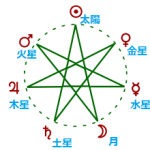 天動説での太陽系モデルでは、七曜は、地球から見た角速度が速いものほど地球に近く、月・水星・金星・太陽・火星・木星・土星の順に並んでいると考えた。しかし、曜日の順序は、この順番またはその逆というわけではなく、2つおき(3つめごと)に遡っている。
天動説での太陽系モデルでは、七曜は、地球から見た角速度が速いものほど地球に近く、月・水星・金星・太陽・火星・木星・土星の順に並んでいると考えた。しかし、曜日の順序は、この順番またはその逆というわけではなく、2つおき(3つめごと)に遡っている。
元来、七曜は、1曜が1日ではなく1時間ごとに地上を守護すると考えられた。これがプラネタリーアワーである。プラネタリーアワーの順序は、地球から最も遠い土星に始まり、内側へと進む。きっかり24時間後、すなわち翌日の第一時間目の守護星は、3つ前(あるいは4つ後)の太陽となる。以下、順に土星、太陽、月、火星、水星、木星、金星、そしてまた土星が各日の第一時間目の守護星になる。第一時間目の守護星は、同時にその日一日の守護星ともされ、その日は守護星の名をもって呼ばれるようになった。こうして、現在の曜日の順が決まった。
青木崇高
曽野綾子
ただ寝たきりでも長生きをするために高額な医療費や制度を使い、あらゆる手段で生命を延ばそうとするのは、実に醜悪なことだと私は思っている。
人は適当な時に死ぬ義務がある。ごく自然にこの世を辞退するのだ。それで初めて私たちは人間らしい尊厳を保った、いい生涯を送ったことになる。
Orhan Pamuk
- I read a book one day and my whole life was changed.
- Happiness is holding someone in your arms and knowing you hold the whole world.
- I don’t want to be a tree; I want to be its meaning.
- How much can we ever know about the love and pain in another heart? How much can we hope to understand those who have suffered deeper anguish, greater deprivation, and more crushing disappointments than we ourselves have known?
Patrick Süskind
- … talent means nothing, while experience, acquired in humility and with hard work, means everything.
- People left him alone. And that was all he wanted.
Nicholas Kristof
We journalists are a bit like vultures, feasting on war, scandal and disaster. Turn on the news, and you see Syrian refugees, Volkswagen corruption, dysfunctional government.
Yet that reflects a selection bias in how we report the news: We cover planes that crash, not planes that take off. Indeed, maybe the most important thing happening in the world today is something that we almost never cover: a stunning decline in poverty, illiteracy and disease.
Everybody knows about the spread of war, the rise of AIDS and other diseases, the hopeless intractability of poverty.
One survey found that two-thirds of Americans believed that the proportion of the world population living in extreme poverty has almost doubled over the last 20 years. Another 29 percent believed that the proportion had remained roughly the same.
That’s 95 percent of Americans — who are utterly wrong. In fact, the proportion of the world’s population living in extreme poverty hasn’t doubled or remained the same. It has fallen by more than half, from 35 percent in 1993 to 14 percent in 2011.
微博
Shane Legg, Marcus Hutter
Intelligence measures an agent’s ability to achieve goals in a wide range of environments.
南方録
雪が降った時の夜会には、おおよそ露地の灯籠の火はつけないほうがよいでしょう。
小座敷に置く花入は、竹の筒か籠、または瓢箪の花入などがよいでしょう。
立花実山
多くの流れに分かれていても、源はただひとつ
ウィキペディア
| 2012年 朝尾直弘(日本近世史学) 甘利俊一(数理工学) 安野光雅(絵本) 飯守泰次郎(指揮) 大村智(有機化学) 岡野俊一郎(サッカー) 金子宏(租税法学) 竹西寛子(小説・古典評論) 辻井喬(小説・詩) 中路融人(日本画) 西田篤弘(物理学) 別府輝彦(応用微生物学) 松本幸四郎 (9代目)(歌舞伎・俳優) 宮﨑駿(アニメーション映画) 諸熊奎治(理論化学・計算化学) |
2015年 安西祐一郎(情報科学・認知科学・学術振興) 大隅良典(細胞生物学) 岡崎恒子(分子生物学) 尾上菊五郎(歌舞伎) 梶田隆章(素粒子物理学) 川淵三郎(サッカー) 黒柳徹子(女優) 佐々木毅(政治学) 西村暹(生化学・分子生物学) 野坂操寿(英語: Keiko Nosaka)(箏曲) 野村万作(狂言) 野本寛一(民俗学・地方文化振興) 橋田壽賀子(脚本) 浜川圭弘(応用物理学) 三谷吾一(漆芸) 皆川博子(小説) |
東京都議会警察・消防委員会
樹下組織犯罪対策部長 陳情二四第三号、第五号から第九号まで及び第一三号から一五号までについてご説明いたします。
これらの陳情は、その意味内容が不明の部分も多く、その逐一について意見を申し上げることは困難でありますが、いずれも東京都暴力団排除条例、以後、暴排条例と説明しますが、暴力団構成員の人権を不当に侵害し差別化を進めるものであって、廃止すべきであるという点に主張の要旨があるように思われます。
しかしながら、暴排条例は、暴力団が都内の事業活動及び都民の生活に不当な影響を与えている現状にかんがみ、その影響を排除するため、事業者によって暴力団の活動を助長することとなる利益の供与等が行われないよう必要な規制措置等を講ずるものであって、その目的及び内容に何ら非難を受けるようなところはございません。
なお、公営住宅入居者から暴力団排除についての事例ですが、広島高等裁判所が、暴力団構成員という地位は暴力団から脱却すればなくなるものであって、社会的身分とはいえず、暴力団のもたらす社会的害悪を考慮すると、暴力団構成員であることに基づいて不利益に取り扱うことは許されるというべきであるから、合理的な差別であって、憲法第十四条に違反するとはいえないと判示し、さらに最高裁判所も暴力団構成員の上告を棄却して確定をしたという判例があります。
また、暴排条例を運用するに当たり、恣意的なものであってはならないことは当然であり、警察としましては、都民の皆様に納得していただけるように、適正かつ効果的な運用に努めているところであります。
このほか、東京都公安委員会の組織のあり方や警察職員の天下りについての言及もありますが、警察法に規定されている東京都公安委員会の管理機能は十全に発揮されており、また、暴排条例が警察職員の天下りを目的とするものではないこともいうまでもないところであります。
今回の各陳情に対する警視庁の意見は以上でございます。
Socrates
… corresponding to the four subsections of our line: Understanding [noe ̄sin] for the highest, thought [dianoian] for the second, belief [pistin] for the third and imagining [eikasian] for the last. Arrange them in a ratio [ana logon] and consider that each shares in clarity to the degree that the subsection it is set over shares in truth.
Michael Polanyi
So far as we know, the tiny fragments of the universe embodied in man are the only centers of thought and responsibility in the visible world. If that be so, the appearance of the human mind has been so far the ultimate stage in the awakening of the world; and all that has gone before, the striving of myriad centers that have taken the risks of living and believing, seem to have all been pursuing, along rival lines, the aim now achieved by us up to this point. They are all akin to us, for all these centers – those which led up to our own existence and the far more numerous others which produced different lines of which many are extinct – may be seen engaged in the same endeavor towards ultimate liberation. We may envisage then a cosmic field which called forth all these centers by offering them a short-lived, limited, hazardous opportunity for making some progress of their own towards an unthinkable consummation. And that is also, I believe, how a Christian is placed when worshiping God.
Gaston Bachelard
Dès l’instant où l’on sentirait nettement que notre connaissance du réel est susceptible d’une rectification indéfinie, sur le rythme d’une approximation mathématique, on serait bien près de désigner la chose en soi. On en verrait la place, on en verrait le rôle. Autour de cette chose en soi, fine et pure comme un nombre, on pourrait suivre les oscillations amorties de l’idéalisme.
ちきりん
知識とは「過去の事実の積み重ね」であり、思考とは「未来に通用する論理の到達点」です。
一部の「知識」は「過去において、他の人がその人の頭で考えた結果」です。それを私たちは書籍や講義、報道などを通して学んでおり、自分の頭の中に知識として保存しています。なにかを考えろ、と言われた時にそれを頭の中から取り出してくるのは、「他人の思考を頭の中から取り出してくる行為」に他なりません。
他人の思考は正しい場合もあれば間違っている場合もあります。時代や背景となる環境条件が異なる場合も多いでしょう。さらに危険なのは、それが「大きな権威をもつ、メディアや専門家の思考」である場合です。
その分野の大家と呼ばれる人が書き、歴史の判定を受けて長く生き残っている名著には、多くの場合「答え」が書いてあります。そんなすばらしい「答え」を目にしても、それに引きずられずに「自分で考える」ことができなければ、私たちは未知の世界に向けて新たな思考を掘いていくことができません。
現代社会ではマスメディアの影響も絶大です。「金髪に鼻ピアス、下着が見えるほどずり下がった穴だらけのジーンズを履いた別代の若者」を見て、「信頼できそうにない」と思う人は少なくないでしょう。
けれどその人は、そういう風貌で実際に信頼できない若者を現実に一人でも知っているのでしょうか?「こういう風貌をしている若者は信頼できない」という知識を、. ドラマや断片的なニュースからすり込まれているだけではないでしょうか?
Kakuzo Okakura
True beauty could be discovered only by one who mentally completed the incomplete.
挾土秀平
内山節
考えてみれば、人間の幸せや充実感といったものは、すべて数字では表せないものだ。数字は相対的なものだが、幸せや充実感は、それぞれの人々にとって絶対的なものだからである。だから高尚なものはすべて数字では表せない。美は数字ではないし、音楽や文学からえた感動も数字ではない。
とすると成熟した社会とは、数字を追いかける社会から、数字では表せないものを大事にする社会への転換によって、生まれるのではないだろうか。幸せ感や生の充実感の高い社会が、成熟した社会のはずだからである。
こんな視点からみていくと、今の政治の主張は情けない。数字ばかりなのである。GDP600兆円とか、2%のインフレとか、1億総活躍とか。それが幸せな社会をつくるのかも、幸せな社会とは何もかも考察されることなく、数字だけが花火のように打ち上げられていく。
Niccolò Tommaseo
Tasting, in general, exercising the sense of taste, receiving its impression, even without a deliberate will or without thought. The sampling becomes more determined in order to taste and to know what one is tasting; or at least it denotes that from the first impression comes a reflected sentiment, an idea, the beginning of an experience. Therefore, to the Latins, sapio in translation meant feeling correctly; and therefore the sense of the Italian sapere [to know], which in itself stands for the right doctrine and for the prevailing of knowledge over science.
Dorothy Walsh
… in shifting the emphasis from the view of literature as “discourse about,” to that of literature as mimesis, the question of truth is also changed from the notion of “true about” to that of “true to.” Only a claim can be true about, but a presentation can be true to.
What kind of knowledge, if any, does literary art afford?
Do works of literary art, when functioning successfully as such, have any intimate engagement with what may be called knowledge?
Stathis Gourgouris
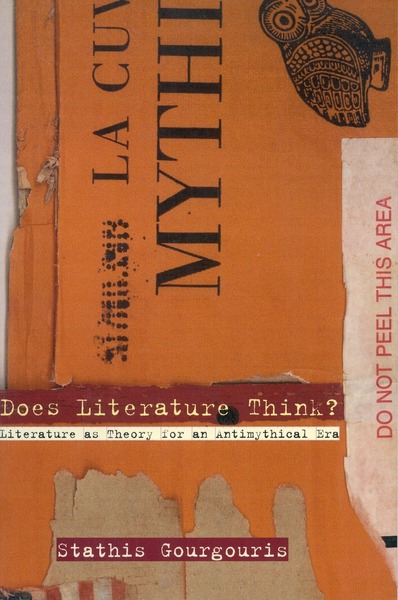 What is the process by which literature might provide us with access to knowledge, and what sort of knowledge might this be? The question is not simply whether literature thinks, but whether literature thinks theoretically—whether it has a capacity, without the external aid of analytical methods that have determined Western philosophy and science since the Enlightenment, to theorize the conditions of the world from which it emerges and to which it addresses itself.
What is the process by which literature might provide us with access to knowledge, and what sort of knowledge might this be? The question is not simply whether literature thinks, but whether literature thinks theoretically—whether it has a capacity, without the external aid of analytical methods that have determined Western philosophy and science since the Enlightenment, to theorize the conditions of the world from which it emerges and to which it addresses itself.
Suspicion about literature’s access to knowledge is ancient, at least as old as Plato’s notorious expulsion of the poets from the city in the Republic.
Michael Wood
A.M. Sheridan Smith
The English ‘knowledge’ translates the French ‘connaissance‘ and ‘savoir‘. Connaissance refers here to a particular corpus of knowledge, a particular discipline – biology or economics, for example. Savoir, which is usually defined as knowledge in general, the totality of connaissances, is used by Foucault in an underlying, rather than an overall, way. He has himself offered the following comment on his usage of these terms:
‘By connaissance I mean the relation of the subject to the object and the formal rules that govern it. Savoir refers to the conditions that are necessary in a particular period for this or that type of object to be given to connaissance and for this or that enunciation to be formulated.‘
Throughout this translation I have used the English word, followed, where the meaning required it, by the appropriate French word in parenthesis (Tr.).
Donald Richie
Aesthetics is that branch of philosophy defining beauty and the beautiful, how it can be recognized, ascertained, judged.
In the West the term was first used in 1750 to describe a science of sensuous knowledge. Its goal was beauty, in contrast with logic, whose goal was truth. Based upon dichotomies (beauty/truth, aesthetics/ logic) the definition was elaborated into a multifaceted concept assuming that opposites and alternates lead to an aesthetic result. The conjectures and conclusions were those of eighteenth-century Europe but are still common today.
There are, however, different criteria at different times in different culture. Many in Asia, for example, do not subscribe to general dichotomies in expressing thought. Japan makes much less of the body/mind, self/group formation, with often marked consequences. Here we would notice that what we could call Japanese aesthetics (in contrast to Western aesthetics) is more concerned with process than with product, with the actual construction of a self than with self-expression.
Unknown
PayScale
| Employer Name | Median Age | Years of Experience | Years with Company | % Female |
|---|---|---|---|---|
| HP | 38 | 7.7 | 6.3 | 32% |
| Oracle | 37 | 9.0 | 5.3 | 29% |
| IBM | 36 | 7.4 | 7.1 | 25% |
| Microsoft | 33 | 6.4 | 4.8 | 27% |
| Qualcomm | 33 | 7.7 | 4.3 | 20% |
| Cisco | 33 | 6.7 | 4.0 | 23% |
| eBay | 33 | 6.9 | 2.7 | 43% |
| Samsung | 33 | 6.0 | 2.3 | 37% |
| Intel | 32 | 5.5 | 5.0 | 25% |
| Adobe | 31 | 5.2 | 3.3 | 28% |
| Apple | 31 | 6.0 | 2.7 | 31% |
| Amazon | 30 | 5.2 | 2.0 | 26% |
| 30 | 5.2 | 2.0 | 30% | |
| Salesforce | 30 | 5.3 | 1.8 | 30% |
| Tesla | 30 | 5.6 | 1.6 | 20% |
| 29 | 5.0 | NA | 42% | |
| SpaceX | 29 | 6.1 | 2.3 | 14% |
| 29 | 4.3 | 1.1 | 32% |
吉見俊哉
2000年代に入ってくると、ITが広がりを見せました。そのとき、知識とは何なのかということが問われてきました。IT化で一定の知識に行き着くことが非常に容易となりました。結果として、ネット上の情報をコピーしていわゆるコピペをして小レポートをつくってしまうという例も何件かありました。
そうすると、ネット情報を見ることと図書館の本を読むことの何が違うのかということを突き詰め、教育のベースを考えなければならないと思いました。考えてみると、ネット情報と図書館の本という間には、知識という点で考えてみると2つの違いがあるのです。1つ目は、作者性の問題です。ネット情報は誰の知識かということよりもみんなの知識であるということ強調しています。しかし、そこで問題となってくるのが誰の知識なのかという作者性の問題です。もう1つは知識の構造性の問題です。知識の構造性とは、ひとつひとつの要素がどのような事柄を意味しているかということではなく、要素と要素がどのように構造化され繋がっているかということが重要でそれが知識なのです。また、知識というものは歴史性の問題があります。知識は長い時間を使って積み上がってきたものでそういった知識と対話するということがとても重要なのです。
Timour Aggiouri
Le gouvernement souhaite poser le droit à la déconnexion dans la loi, pour favoriser le respect de l’équilibre entre la vie professionnelle et la vie privée.
Chris Kolbu
 After a wildly successful 2008 expansion from a simple coffee shop to include the sale of mid-century furniture and boutique cocktails, the venerable Fuglen (est 1963) has opened a sister store in Tokyo. At first glance, the Oslo-Tokyo connection might seem tenuous, but there is much to unite the two cities in matters of taste, and Fuglen (“The Bird”) is nothing if not tasteful.
After a wildly successful 2008 expansion from a simple coffee shop to include the sale of mid-century furniture and boutique cocktails, the venerable Fuglen (est 1963) has opened a sister store in Tokyo. At first glance, the Oslo-Tokyo connection might seem tenuous, but there is much to unite the two cities in matters of taste, and Fuglen (“The Bird”) is nothing if not tasteful.
While most people might think Japanese prefer tea – and they might just – Japan is similar to Norway in that both countries put a high premium on quality when purchasing coffee. In addition, the palates seem to be quite similar, opting for lighter roasted coffees and brewing methods – such as the pour over. Japan is a regular buyer of the most expensive lots of coffee in the world.
J-CASTニュース
「演歌」の人気復活を後押しすべく、超党派の有志議員が立ち上がった。衆参両院の約40人が集まり、議員連盟「演歌・歌謡曲を応援する国会議員の会」の設立を決めたというのだ。
これを受け、ネット上では演歌の位置づけをめぐり、疑問の声が相次いでいる。果たして演歌は「日本の伝統文化」なのだろうか――と。
KOTB [コトビー]
電車内で本を読んでいる人からは「どうよ、本を読んでる自分」オーラを感じます。 どうして人は電車内で本を読むことの優越感を禁じ得ないのでしょうか? そして、なぜ電車内で本を読んでいる人は神々しく見えるのでしょうか?
1. あなたとはちがうのよ、わたし
すべてはこれに尽きます。スマートフォンというデジタルと、紙の本というアナログ。両者を比べると、明らかにデジタルを使っている人のほうが優れているはずです。それなのに、なぜか紙の本を読んでいる人が神々しく見える。文明の発達に反逆するかのような強い意志から、人間が本来持つべき飽くなき挑戦心が感じ取れます。わかりやすく言えば、炊飯器を使えばいいのに、ずっとガスでご飯を炊いている人と同じ精神です。凛としたその姿。感服いたしました。
2. わたし、こんな本も読んじゃうのよ
本が好きで、いつだって本が欠かせない人がいます。しかし、中には計算ずくで自分を演出しようとする人も一定数存在します。そのカテゴリーに属する人は「自分がいかに高尚な本を読んでいるか」を見せつける能力に長けています。基本的にカバーはつけません。表紙をモロに見えるように本を読みます。有斐閣、講談社学術文庫、岩波文庫あたりが良いラインです。「あの人、むずかしそうな本を読んでる」と一発でわかるような本でなければいけません。
3. 付箋を貼りまくって熱心さをアピール
電車内を見ていると猛烈に付箋を貼った本を読む人を見かけることがあります。もう付箋を貼りすぎてどのページが重要なのかさえわからなくなっている状態。むしろ、付箋がないページの方が重要なの?と言いたくなるほどの「付箋地獄」。熱心に本を読んでいる姿を見せつけたい人にとって、付箋は強い味方になります。知識への貪欲な想いを電車内で見せつけるためには、本に付箋を貼りまくるというのは至極合理的なアイデアです。
J-CASTニュース
学生の読書時間の減少が浮き彫りとなった。大学生協の調査で、全く本を読まない学生が4割を超えたのだ。電子書籍を含んだ読書時間でも、近年は減り続けている。米国のトップレベルの大学では在学中に500冊近くの本を読むといい、大きな差が見られる。「第49回学生生活実態調査」の報告によると、調査に協力した全国の国公立、私立大の学部学生8930人の1日の読書時間は平均26.9分。読書時間ゼロの学生は40.5%に達したという。
大学教員: 電車内で大勢の学生を見かけるが、読書している学生は少なく、みんなスマホの画面をのぞいている。
佐々木紀彦: 日米の学生の差を生んでいるのは、インプット量、読書量の差。人と知力で差をつけるカギとなるのはインプット量。ある程度知識を整理する力とアウトプット能力があれば、「読書量」と「経験量」こそが、知力の大部分を決定づける。
前田雨城
「草木は人間と同じく自然より創りだされた生物である。染料となる草木は自分の命を人間のために捧げ、色彩となって、人間を悪霊より守ってくれるのであるから、愛をもって取扱い、感謝と木霊への祈りをもって染の業に専念すること」────古代の染め師の間に語り伝えられた「染色の口伝」の一節である。
Marc Albrighton
 Shinji Okazaki is also one of the main characters. If you ever see him not smiling you’ve caught him on a very bad day.
Shinji Okazaki is also one of the main characters. If you ever see him not smiling you’ve caught him on a very bad day.
When you’re at a place like we are at the minute, right up there and doing the things that we never thought we could, then why not enjoy it?
 N’Golo Kante has been unbelievable as well. I don’t think I’ve ever seen him not smiling or grinning.
N’Golo Kante has been unbelievable as well. I don’t think I’ve ever seen him not smiling or grinning.
He could be late for a meeting or late to training or whatever, and someone will say ‘you’re fined £100 or £200’ and he will just have a massive grin across his face.
Sergio Moraes
David Conn
 While parents give family life over to ferrying boys to training three nights a week and matches on Sundays against other professional clubs’ academies many hours’ travel away, the reality is that just 1% of the trainees will ultimately play football for a living.
While parents give family life over to ferrying boys to training three nights a week and matches on Sundays against other professional clubs’ academies many hours’ travel away, the reality is that just 1% of the trainees will ultimately play football for a living.
Even the few who survive the annual cuts and make it to a “scholarship” at 16 are likely to fall away. Research tracking academy boys is itself difficult to find but it is accepted that only a minority of boys awarded “scholarships” remain in the professional game at 21. Of those who win the golden ticket of a proper, professional contract at 18, the vast majority are also not playing professionally at 21.
David Beckham Academy
John Cartwright
 People inside and outside of the game of football are lamenting over the lack of ‘street football’ our youngsters play. How long have I been saying this? However, it isn’t good enough to cry over the loss of the street game and the qualities it once brought to football here, we must accept that street development is a thing of the past and move on…
People inside and outside of the game of football are lamenting over the lack of ‘street football’ our youngsters play. How long have I been saying this? However, it isn’t good enough to cry over the loss of the street game and the qualities it once brought to football here, we must accept that street development is a thing of the past and move on…
Technique is action without interference: skill is action with interference.
紫紅社
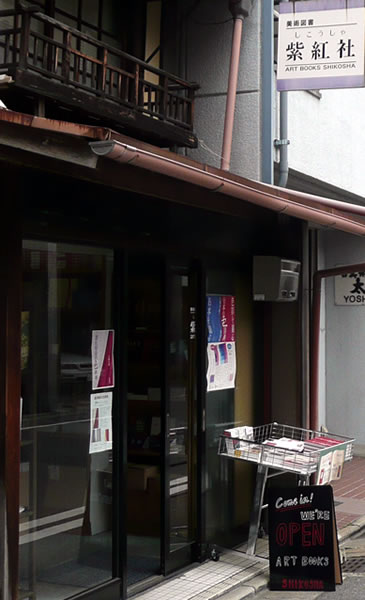 日本の伝統色、文様、デザイン、日本絵画など、和の伝統美を世界に伝える美術工芸書を出版している京都の出版社
日本の伝統色、文様、デザイン、日本絵画など、和の伝統美を世界に伝える美術工芸書を出版している京都の出版社
日本の色辞典、 源氏物語の色辞典、 王朝のかさね色辞典、 よしおか工房に学ぶ はじめての植物染め、 自然の色を染める: 家庭でできる植物染、 虹色どろぼう: 染司よしおかの植物染、 Der Regenbogenfarbendieb: 虹色どろぼうドイツ語版、 筒描: 藍の華、吉岡常雄の仕事、 日本伝統絞りの技、歩- 芹沢銈介の創作と蒐集、 和更紗、 正倉院裂と飛鳥天平の染織、 正倉院・法隆寺伝来裂、 興福院所蔵刺繍掛袱紗、 名物裂 上巻: 前田家伝来、 名物裂 下巻: 前田家伝来、 円山派衣裳画: 三井家伝来、 袢纏 法被: 鷲見コレクション、 図説 きものの仕立方、 ゆめをくむ: 柿元久美子 組紐作品集、 日本の文様図典、 日本のしつらえ: 鈴木源吾 経師の技、 薩摩切子、 日本のガラス、 王朝のあそび: いにしえの雅びな世界、 正倉院宝物にみる楽舞・遊戯具、 正倉院宝物にみる家具・調度、 正倉院宝物にみる仏具・儀式具、 時代屏風聚花 続篇 。。。 。。。 。。。
Rebecca Brinson
 Agatha Christie’s book sales kept increasing, and she expanded into writing radio and stage plays. She did well in the U.K., but it was the cash from American publications and serializations in magazines like Colliers and Cosmopolitan that helped her accumulate real estate; at the time, the top U.K. income tax rate was 90%, but foreign income was exempt from taxation. Since Christie’s prose was straightforward, her work was quick and cheap to translate, so other foreign royalties started rolling in, too.
Agatha Christie’s book sales kept increasing, and she expanded into writing radio and stage plays. She did well in the U.K., but it was the cash from American publications and serializations in magazines like Colliers and Cosmopolitan that helped her accumulate real estate; at the time, the top U.K. income tax rate was 90%, but foreign income was exempt from taxation. Since Christie’s prose was straightforward, her work was quick and cheap to translate, so other foreign royalties started rolling in, too.
But by the 1950s, U.K. tax laws would catch up with her, and Christie toned down her output to roughly one book a year. She was unwilling to write essentially for free, and she wanted to avoid “enlarg[ing] the finances of the Inland Revenue who would spend it mostly on idiotic things.” (O, to be a writer who is making too much money from writing too often.)
中村吉明
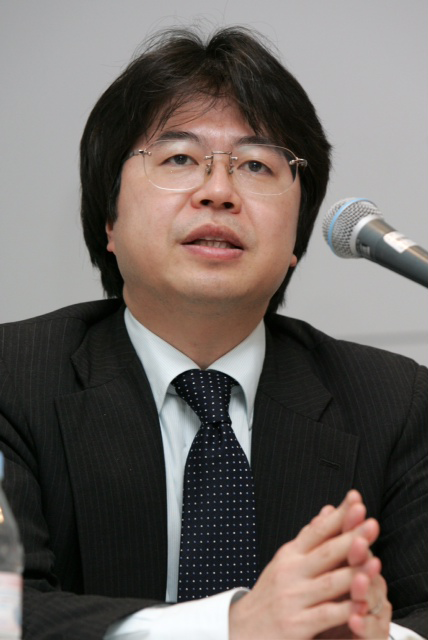 産業の空洞化に関するこれまでの議論を整理すると、製造業の生産拠点の海外移転により国内の雇用や技術水準等に影響を与えるとの議論、それに伴い国内にサービス業のみが残り、我が国経済が弱体化してしまうとの議論、高付加価値化製品の生産拠点の海外移転や研究開発拠点の海外進出を背景に、本来、我が国の経済成長の基軸となる産業が海外へ流出してしまうのではないかとの議論等がある。一方、こうした変化は我が国の構造改革の一過程であり若干の痛みを伴っても避けられないとの議論、企業は比較優位の観点から適切な資源配分をしており、仮に上記のような負の現象が現れたとしても致し方ないという議論もある。
産業の空洞化に関するこれまでの議論を整理すると、製造業の生産拠点の海外移転により国内の雇用や技術水準等に影響を与えるとの議論、それに伴い国内にサービス業のみが残り、我が国経済が弱体化してしまうとの議論、高付加価値化製品の生産拠点の海外移転や研究開発拠点の海外進出を背景に、本来、我が国の経済成長の基軸となる産業が海外へ流出してしまうのではないかとの議論等がある。一方、こうした変化は我が国の構造改革の一過程であり若干の痛みを伴っても避けられないとの議論、企業は比較優位の観点から適切な資源配分をしており、仮に上記のような負の現象が現れたとしても致し方ないという議論もある。
企業が生産拠点等を海外に移転する理由には、比較優位に基づく利潤最大化行動が背景にあり、これを防止することは一般に経済厚生を低下させる可能性がある。しかしながら、当該生産拠点等の国内での存在自体が国内経済にある種の外部経済効果を及ぼしている場合、生産拠点等が海外移転すると、一国の経済厚生が低下する可能性があると考えられる。産業の空洞化の問題の本質は、こうした企業の私的便益と社会的便益とが乖離するところにあると思われる。
企業は時代の変遷とともにグローバル化しており、産業の空洞化の中で相変わらず、旧態依然とした対応をしているのは結局政府、議会、地方自治体なのではないのか。彼ら自身の海外移転は不可能なのだから。彼らこそ時代に応じて変わるべきである。彼らがすべきことは、企業が我が国に立地しやすくなるような魅力的な事業環境、投資環境の整備を行うことではないか。
Andrei Stasevich
David Hamilton
 Facebook co-founder Eduardo Saverin has renounced his U.S. citizenship ahead of the company’s IPO — a move likely calculated to help him dodge capital-gains taxes.
Facebook co-founder Eduardo Saverin has renounced his U.S. citizenship ahead of the company’s IPO — a move likely calculated to help him dodge capital-gains taxes.
Saverin gave up his U.S. citizenship in September 2011. Saverin was born in Brazil in 1982, then moved to the U.S. in 1992 and became a citizen in 1998.
Saverin, one of a handful of people who helped Mark Zuckerberg start Facebook at Harvard in 2004, hasn’t been active at the company for many years. He still holds an estimated 4 percent of Facebook, however, a stake worth as much as $7.2 billion.
久米書店
Peter Lynch, John Rothchild
To me, an investment is simply a gamble in which you’ve managed to tilt the odds in your favor. It doesn’t matter whether it’s Atlantic City or the S&P 500 or the bond market. In fact, the stock market most reminds me of a stud poker game.
PIMIHEL
Justin Jackson
This is a web page.
There’s not much here.
Just words.
And you’re reading them.
We’ve become obsessed with fancy designs, responsive layouts, and scripts that do magical things.
But the most powerful tool on the web is still words.
I wrote these words, and you’re reading them: that’s magical.
I’m in a little city in British Columbia; you’re probably somewhere else. I wrote this early in the morning, June 20th, 2013; you’re probably reading it at a different time. I wrote this on my laptop; you could be reading this on your phone, a tablet or a desktop.
You and I have been able to connect because I wrote this and you’re reading it. That’s the web. Despite our different locations, devices, and time-zones we can connect here, on a simple HTML page.
老子
知者不言、言者不知。塞其兌、閉其門、挫其鋭、解其紛、和其光、同其塵。是謂玄同。故不可得而親、不可得而疏。不可得而利、不可得而害。不可得而貴、不可得而賤。故爲天下貴。
**
反者道之動,弱者道之用。天下萬物生於有,有生於無。
TBS News Bird
Scott R. Loss, Tom Will, Peter P. Marra
Anthropogenic threats, such as collisions with man-made structures, vehicles, poisoning and predation by domestic pets, combine to kill billions of wildlife annually. Free-ranging domestic cats have been introduced globally and have contributed to multiple wildlife extinctions on islands. The magnitude of mortality they cause in mainland areas remains speculative, with large-scale estimates based on non-systematic analyses and little consideration of scientific data. Here we conduct a systematic review and quantitatively estimate mortality caused by cats in the United States. We estimate that free-ranging domestic cats kill 1.3–4.0 billion birds and 6.3–22.3 billion mammals annually. Un-owned cats, as opposed to owned pets, cause the majority of this mortality. Our findings suggest that free-ranging cats cause substantially greater wildlife mortality than previously thought and are likely the single greatest source of anthropogenic mortality for US birds and mammals. Scientifically sound conservation and policy intervention is needed to reduce this impact.
500px
Jolene Creighton
- There are some 10 quadrillion ants on Earth.
- Ants are not necessarily short-lived.
- Ants can carry more than 3 times their own weight.
- Some ants practice a primitive form of slavery.
- Ants can account for over a quarter of the animal biomass in some areas.
- Ants “talk” using chemicals.
- Ants have a freaky kind of hive mind.
- The largest known ant species was 2.4 inches long.
- Like Humans, ants have conquered the globe.
- Ants are as old as dinosaurs.
Wikipedia, Jolene Creighton
|
Humans Cockroaches Ants Bacteria |
7,500,000,000 1,500,000,000,000 10,000,000,000,000,000 5,000,000,000,000,000,000,000,000,000,000 |
Wikipedia
山折哲雄
素粒子というものは科学的に証明できるかもしれない。けれども実感としてその存在を感じられない。魂というものは、科学的には証明できなくても、実感としては強く感じることができる。
Ron Sender, Shai Fuchs, Ron Milo
We critically revisit the ″common knowledge″ that bacteria outnumber human cells by a ratio of at least 10:1 in the human body. We found the total number of bacteria in the ″reference man″ to be 3.9·1013, with an uncertainty (SEM) of 25%, and a variation over the population (CV) of 52%. For human cells we identify the dominant role of the hematopoietic lineage to the total count of body cells (≈90%), and revise past estimates to reach a total of 3.0·1013 human cells in the 70 kg ″reference man″ with 2% uncertainty and 14% CV. Our analysis updates the widely-cited 10:1 ratio, showing that the number of bacteria in our bodies is actually of the same order as the number of human cells. Indeed, the numbers are similar enough that each defecation event may flip the ratio to favor human cells over bacteria.
Wikipedia
Bacteria constitute a large domain of prokaryotic microorganisms. Typically a few micrometres in length, bacteria have a number of shapes, ranging from spheres to rods and spirals. Bacteria were among the first life forms to appear on Earth, and are present in most of its habitats. Bacteria inhabit soil, water, acidic hot springs, radioactive waste, and the deep portions of Earth’s crust. Bacteria also live in symbiotic and parasitic relationships with plants and animals. They are also known to have flourished in manned spacecraft.
There are typically 40 million bacterial cells in a gram of soil and a million bacterial cells in a millilitre of fresh water. There are approximately 5×1030 bacteria on Earth, forming a biomass which exceeds that of all plants and animals.
Luke Barnesmoore
Is personality the same as ego? How do we distinguish confidence and self-knowledge from arrogance and the ego? It has been said that arrogance is a thought while confidence is a feeling, and in this dictum (and the distinction between thought and feeling) we find light. To understand this dictum, we must associate the term ‘thought’ with the peripatetic mode of thought (the linear accumulation of sensory evidence, thought as manifest in words, etc.) and ‘feeling’ with the intuitive mode of knowing (where what is known by reason is brought to bear in a single, silent movement of the mind).
The Ego is predicated on our experience and conception of self as discrete, biologically determined entities that are manifest in passing time and physical space—in the potential for competition produced by the atomization of consciousness into seemingly discrete (from the perspective of our existence in passing time and physical space) systems of organization. It is produced by the application of materially-reductive, linear logic to our experience in passing time and physical space (for example, in producing the illusion of death). Ego, then, can be understood as a lack of self-knowledge produced by the illusion of self-knowledge from the peripatetic perspective.
Online Etymology Dictionary
bacteria (n.)
1847, plural of Modern Latin bacterium, from Greek bakterion “small staff,” diminutive of baktron “stick, rod,” from PIE *bak- “staff used for support” (also source of Latin baculum “rod, walking stick”). So called because the first ones observed were rod-shaped. Introduced as a scientific word 1838 by German naturalist Christian Gottfried Ehrenberg (1795-1876).
knowledge (n.)
early 12c., cnawlece “acknowledgment of a superior, honor, worship;” for first element see know (v.). Second element obscure, perhaps from Scandinavian and cognate with the -lock “action, process,” found in wedlock. Meaning “capacity for knowing, understanding; familiarity; fact of knowing” is late 14c. Sense of “an organized body of facts or teachings” is from c. 1400, as is that of “sexual intercourse.” Also a verb in Middle English, knoulechen “acknowledge” (c. 1200), later “find out about; recognize,” and “to have sexual intercourse with” (c. 1300).
John Maeda
theguardian
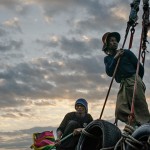 Myint Thein doesn’t have much time to talk, so he tells us the basics. He paid a middleman two years ago to smuggle him across the border into Thailand and find him a job in a factory. After an arduous journey travelling through dense jungle, over bumpy roads and across rough waves, Myint Thein finally arrived in Kantang, a Thai port on its western, Andaman coast, where he discovered he’d been sold to a boat captain. “When I realised what had happened, I told them I wanted to go back,” he says hurriedly. “But they wouldn’t let me go. When I tried to escape, they beat me and smashed all my teeth.”
Myint Thein doesn’t have much time to talk, so he tells us the basics. He paid a middleman two years ago to smuggle him across the border into Thailand and find him a job in a factory. After an arduous journey travelling through dense jungle, over bumpy roads and across rough waves, Myint Thein finally arrived in Kantang, a Thai port on its western, Andaman coast, where he discovered he’d been sold to a boat captain. “When I realised what had happened, I told them I wanted to go back,” he says hurriedly. “But they wouldn’t let me go. When I tried to escape, they beat me and smashed all my teeth.”
For the next 20 months, Myint Thein and three other Burmese men who were also sold to the boat trawled international waters, catching anything from squid and tuna to “trash fish”, also known as bycatch – inedible or infant species of fish later ground into fishmeal for Thailand’s multibillion-dollar farmed prawn industry. The supply chain runs from the slaves through the fishmeal to the prawns to UK and US retailers. The product of Myint Thein’s penniless labour might well have ended up on your dinner plate.
Paulo Coelho
Businessman: How long does it take you to catch so many fish?
Fisherman: Oh, just a short while.
Businessman: Then why don’t you stay longer at sea and catch even more?
Fisherman: This is enough to feed my whole family.
Businessman: So, what do you do for the rest of the day?
Fisherman: Well, I usually wake up early in the morning, go out to sea and catch a few fish, then go back and play with my kids. In the afternoon, I take a nap with my wife, and evening comes, I join my buddies in the village for a drink — we play guitar, sing and dance throughout the night.
Businessman: I am a PhD in business management. I could help you to become a more successful person. From now on, you should spend more time at sea and try to catch as many fish as possible. When you have saved enough money, you could buy a bigger boat and catch even more fish. Soon you will be able to afford to buy more boats, set up your own company, your own production plant for canned food and distribution network. By then, you will have moved out of this village and to Sao Paulo, where you can set up HQ to manage your other branches.
Fisherman: And after that?
Businessman: After that, you can live like a king in your own house, and when the time is right, you can go public and float your shares in the Stock Exchange, and you will be rich.
Fisherman: And after that?
Businessman: After that, you can finally retire, you can move to a house by the fishing village, wake up early in the morning, catch a few fish, then return home to play with kids, have a nice afternoon nap with your wife, and when evening comes, you can join your buddies for a drink, play the guitar, sing and dance throughout the night!
Fisherman: Isn’t that what I am doing now?
山本周五郎
私は自分が見たもの、現実に感じることのできるもの以外は(殆ど)書かないし、英雄、豪傑、権力者の類にはまったく関心がない。人間の人間らしさ、人間同士の共感といったものを、満足やよろこびのなかよりも、貧困や病苦や、失意や絶望のなかに、より強く私は感じることができる。
Antoine de Saint Exupéry
Irene Salo
I realized that my curiosity lies in the fact that I can relate my own conceptions to some of the Japanese ideology. I believe this is because I grew up in Finland, where nature, quietness and simplicity are shared in both of the countries’ design philosophy. There is otherwise a huge contrast in the lifestyles and the differences in the worldviews between the West and Japan. Simplicity in Japan seems to be comparable to Western design principles of ‘less is more’; especially Scandinavian and Nordic design. The major difference is, though, that simplicity has existed far longer in Japan and is implemented into nearly every aspect of their society and culture.
**
Instead of constantly searching for new perfection through focusing on technology and erasing a country’s traditions and culture, we can also aim for sustainable design solutions. Simplicity can present benefits for our society and way of living, yet we neglect it and keep striving for the most complicated and excessive. In today’s technology-saturated world, could we enhance our visual communication by examining the ancient Japanese aesthetic principles? ‘Greatness’ could exist in the inconspicuous and overlooked details. Sometimes answers can be found in the most unexpected forms.
